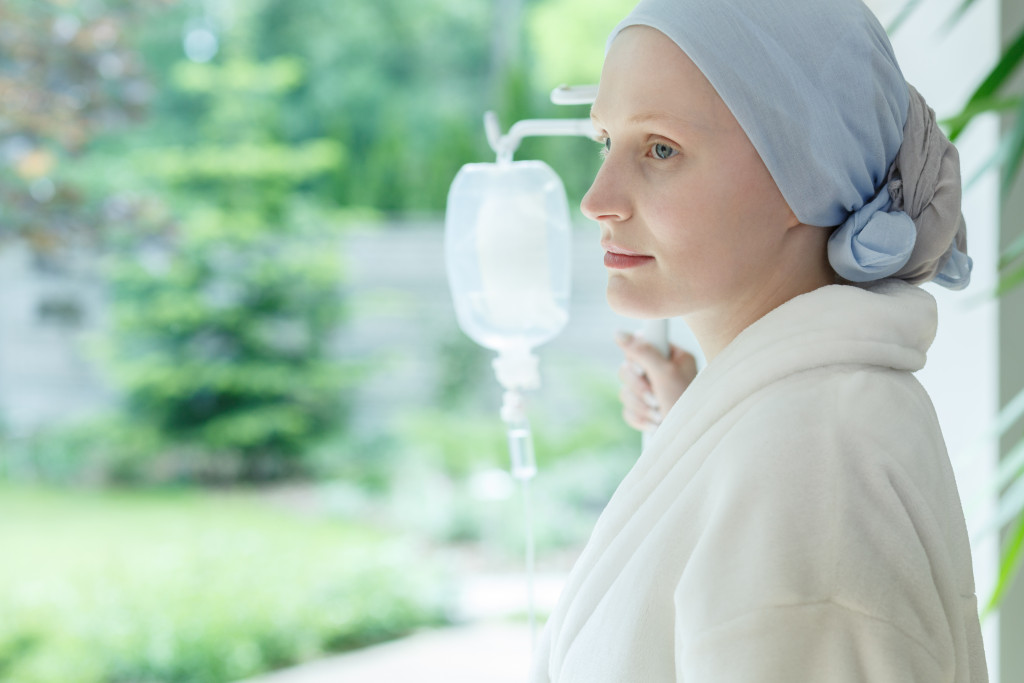• Breast cancer treatment plans should be tailored to the individual based on factors such as age, medical history, lifestyle choices, and genetics.
• Immunotherapy and targeted therapy are two promising treatments that are being developed for individuals with breast cancer.
• Common side effects of treatments include fatigue, nausea & vomiting, hair loss, and skin changes.
• An individualized approach to treatment offers several benefits, including providing more effective treatments and reducing side effects.
Breast cancer is a significant and serious health issue that affects people all over the world. With advances in technology, more individualized treatment options are available than ever before that can help patients receive the best care possible. Here’s what these individualized treatments mean for breast cancer patients and their families.
Customizing Treatments for Each Patient
The most important aspect of any cancer treatment is its ability to be tailored to the patient’s needs. This means that the treatment plan should be based on the type and stage of the disease, as well as on other factors such as age, medical history, lifestyle choices, genetics, and more. An individualized approach allows doctors to plan for each patient’s unique circumstances and needs.
Age: Younger women may require different treatments than those recommended for older women due to the increased risk of recurrence and mortality related to advanced age.
Medical History: The patient’s medical history can influence the treatment plan. Patients with thyroid or other hormone-related cancers may be at higher risk for recurrence and require additional monitoring.
Lifestyle Choices: Patients who smoke, are overweight, or have poor nutrition may need different treatments than those with a healthy lifestyle. This is because some treatments may not be effective in these individuals.
Genetics: Genetics can also play an important role in determining the best course of treatment for a breast cancer patient. Certain inherited gene mutations, such as BRCA1 and BRCA2, increase the risk of developing breast cancer and can affect treatment decisions.
Immunotherapy
Immunotherapy for breast cancer is a cancer treatment that uses the body’s immune system to fight cancer cells. This treatment has been effective in some breast cancer cases, particularly those with advanced or metastatic disease. It may be used alongside other treatments such as chemotherapy, radiation, and surgery. The immunotherapy approach is still in the early stages of development. More research is needed to determine its effectiveness, potential side effects, and long-term outcomes. However, it is a promising option for many breast cancer patients.
Targeted Therapy
Targeted therapy is another form of individualized treatment that can be used to treat certain types of breast cancer. This therapy uses drugs or other substances to target specific molecules within the cancer cells, thereby stopping them from growing and spreading. Targeted therapies are often used alongside other treatments, such as chemotherapy and radiation, and may be used independently.
Understanding Side Effects
Treatments for breast cancer can have significant side effects. It is important to understand these risks before beginning any treatment plan and be prepared for them. Common side effects of treatments used to treat breast cancer may include the following:
Fatigue: One of the most common side effects of cancer treatment. It can range from mild to severe. It may last for several weeks or even months after the treatment has been completed.
Nausea & Vomiting: Nausea and vomiting are possible during certain treatments, such as chemotherapy or radiation therapy.
Hair Loss: Hair loss is a common side effect of some cancer treatments. It may be temporary or permanent and can affect the scalp, eyebrows, eyelashes, underarms, and other areas.
Skin Changes: Skin changes, such as rash or discoloration, can also occur during treatment. These changes may be minor or more severe and may require special care.
Benefits of Individualized Treatment Plans
Adopting an individualized approach to treating breast cancer has several key benefits. First, it allows doctors to ensure that each patient gets the most effective treatment possible since they can tailor treatments to each person’s unique situation.
It also helps reduce side effects since each patient can receive medications at lower doses or in different combinations than traditional treatments might require. Finally, it increases communication between healthcare providers and patients since doctors can explain why certain decisions were made to provide them with the best care possible.
Integrating Technology into Treatment Plans
In addition to offering personalized care plans for breast cancer patients, technological advancements have allowed doctors to monitor progress more closely and accurately than ever before. For example, some diagnostic imaging tests have become much more precise thanks to technologies such as PET/CT scans which can detect even small tumors or metastases from distant sites in the body.
These tests have improved accuracy rates significantly compared with traditional methods and allow physicians to better track how effective treatments are or if any changes need to be made for progress toward recovery to continue. Furthermore, new computer-aided detection systems help radiologists quickly identify suspicious lesions on mammograms, which can be investigated further with biopsy results if needed.
As more treatments become available to treat breast cancer, an individualized approach is becoming increasingly important. With technological advancements and the ability to monitor progress more closely, breast cancer patients can have a better chance of successful treatment and, hopefully, longer lives.


